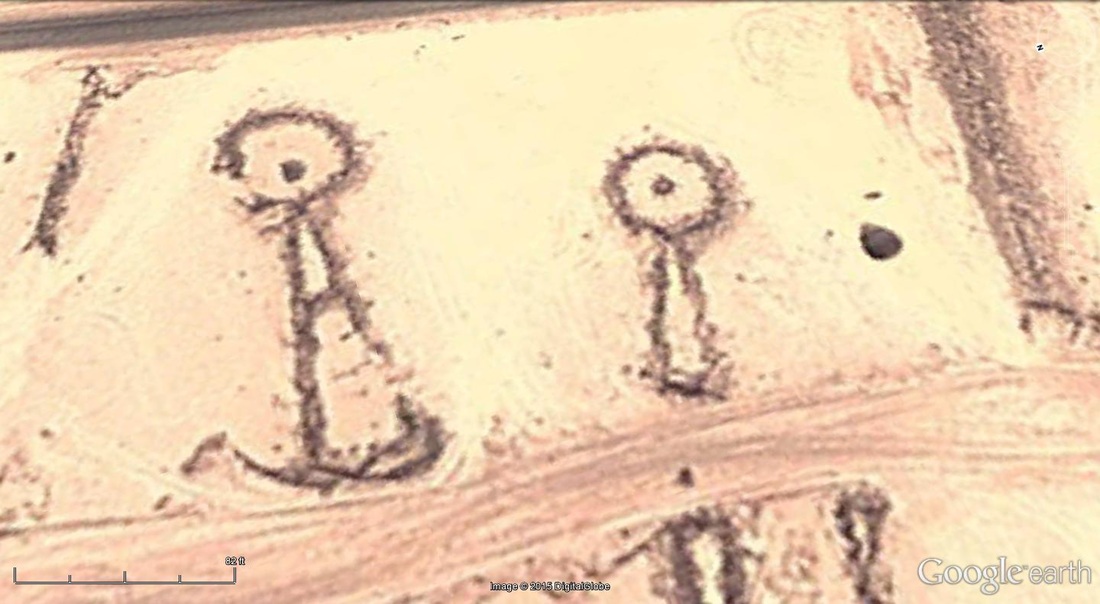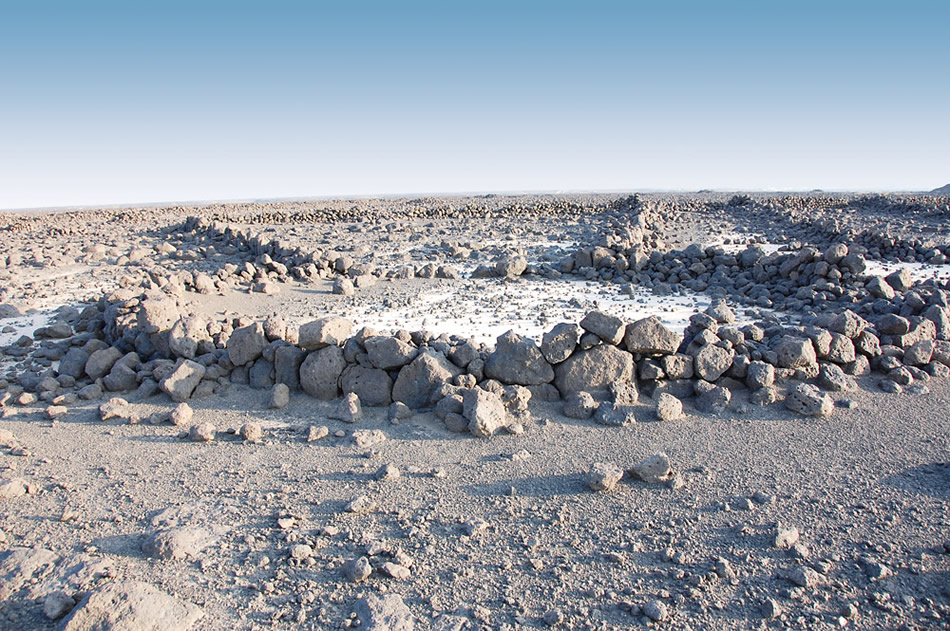In the Al-Hayit region in Saudi Arabia near Medina, keyhole and pendant shapes vary in size from a few meters to dozens of meters, and they are often found arranged along “avenues”. © Imagery GeoEye. See it on Google Maps. Via Myths are History and Saudi Aramco World. They are probably burial structures from as old as 7000 BC, as similar late Neolithic and the early Bronze ages structures from Jordan.
-
![[PDF]](https://www.eixdelmon.com/wp-content/plugins/papercite/img/pdf.png) A. Kennedy David L; Al-Saeed, “Desktop Archaelogy,” , vol. 60, iss. 4.
A. Kennedy David L; Al-Saeed, “Desktop Archaelogy,” , vol. 60, iss. 4.
[Bibtex]@Article{aramcoworld200904desktoparchaeology, author = {Kennedy, David L; Al-Saeed, Abdullah}, title = {Desktop Archaelogy}, journaltitle = {Saudi Aramco World}, date = {2009-08-31}, volume = {60}, number = {4}, note = {PDF printed from the web version of the article}, url = {http://archive.aramcoworld.com/issue/200904/desktop.archeology.htm}, urldate = {2016-08-19}, file = {aramcoworld200904desktoparchaeology.pdf:media/trismegisto/Vitamin/Documents/Bibliography/aramcoworld200904desktoparchaeology.pdf:PDF}, owner = {trismegisto}, timestamp = {2016-08-19}, }
The Saudi Aramco World article has information on them:
Second, and more abundantly, are two types of what also appear to be burial structures, which collectively must represent sustained activity over a long period of time. First there are “pendant tombs”—circular burial enclosures at the end of a line of small cairns. These have turned up in both the Harrat Khaybar and Al-Hayit areas. In a few instances, they have a second enclosure at the other end (“double pendant tombs”). They often turn up in large groups, forming what appear to be entire cemeteries, or parts of them, and they are to be counted in the hundreds, perhaps even in the thousands.
Now we come to the “keyhole tombs” and the “gates,” both novelties of the Harrat Khaybar, structures that are striking because of their unexpected, unique forms and their astonishing numbers. The keyhole tombs usually consist of a circular enclosure at the head of stone walls that form an isosceles triangle. There are numerous variations in size and in the relationships of circles and courtyards: In a few places the two are completely separated, and in others the triangle has been elongated so much it begins to look similar to the general form of some pendant tombs. Al-Saeed and the Desert Team visited a number of these structures, and their ground photographs confirm that the walls are built of dry-laid masonry, but set out carefully and often still standing a meter or more high.
(…) As for the cemeteries, many of the keyhole and gate types are entirely new forms, but the pendants have parallels in Jordan, where a recent discovery of a necropolis from between the late Neolithic and the early Bronze ages, with hundreds of tombs and ritual structures dating back an estimated 9000 years, includes pendant tombs like those in Saudi Arabia.







